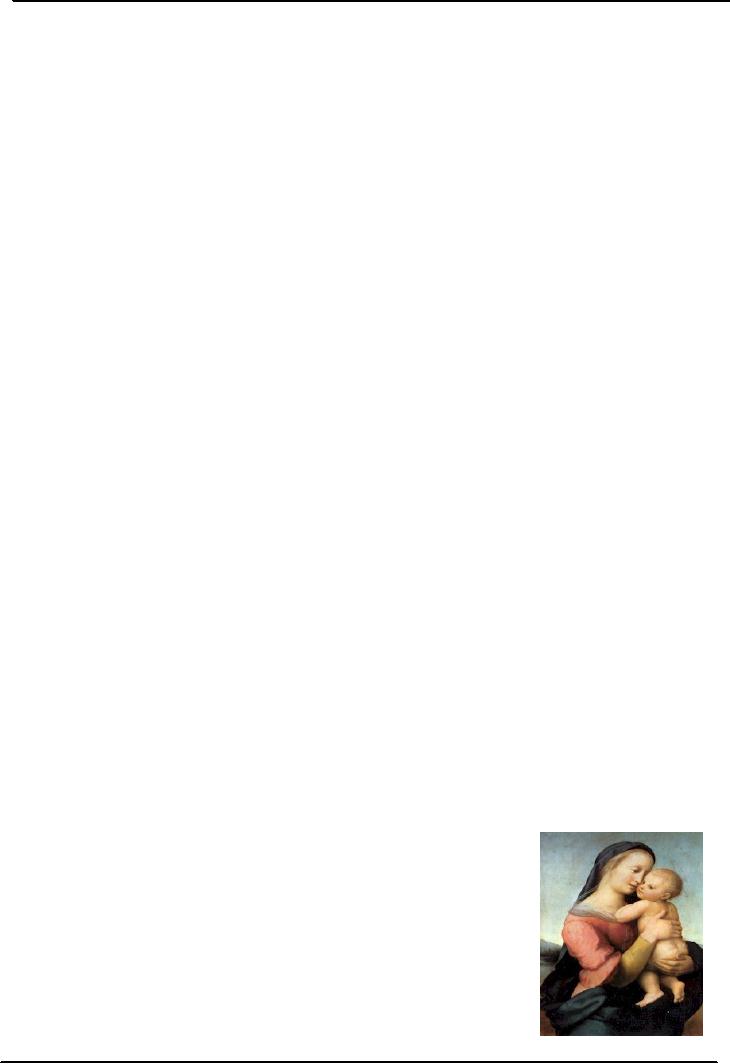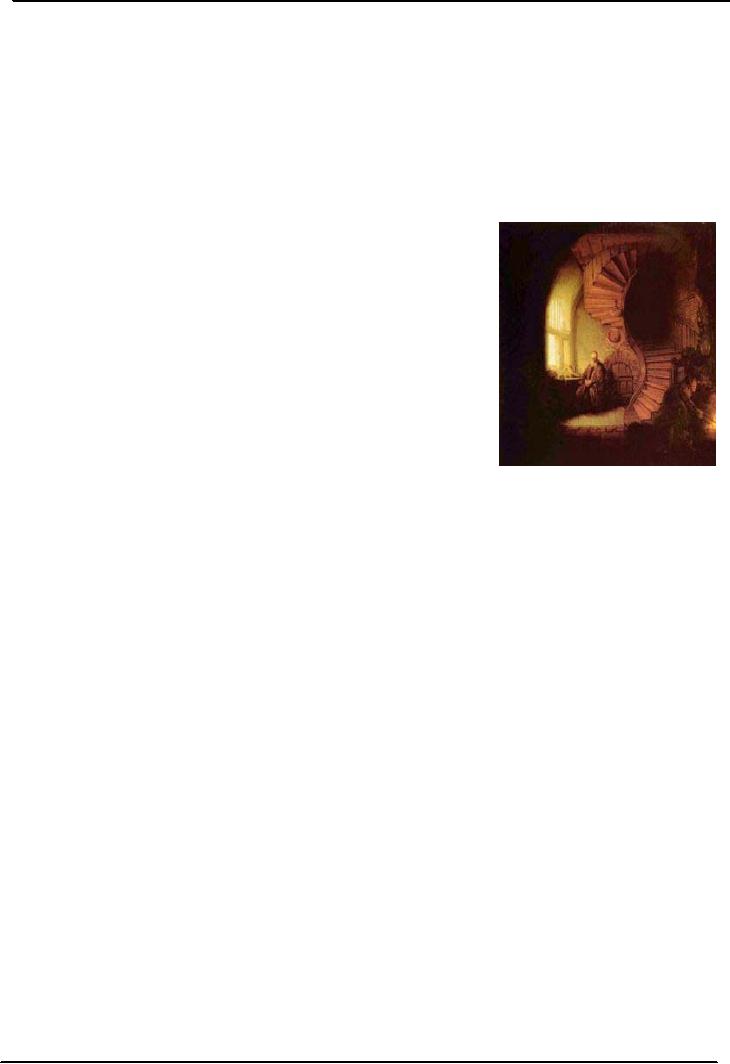 |

Forensic
Psychology (PSY -
513)
VU
Lesson
12
JUNGIAN
PSYCHOLOGY
AND
VIOLENCE
Objectives:
To
understand the concept of different
archetypes
To
understand the concept of active
imagination
Difference
of Freudian unconscious and
Jungian Collective
unconscious
Though
Jung's analytical psychology
derives from Freud's psychoanalysis,
there was contention,
disagreement
and disappointment shared between these
two great thinkers, resulting in a
rift between
once
great friends. Some key
differences are presented
below:
FREUD
depicted the unconscious as
a
JUNG
postulated two
layers
of the
container
underlying the conscious
mind,
unconscious
- a personal
unconscious,
right
whose
task is to contain rejected and
un-
under
the conscious mind, taking
in
encountered
events, feelings, thoughts
and
personal
psychic contents and down
below
experiences
of the conscious
mind.
the
collective
unconscious, containing
the
accumulating
experience of all
humanity.
According
to FREUD the force of life
is
There
is much more to life than
sexuality,
driven
by sexuality
and
the underlying
which
is a part of a greater wholeness
like
unconscious
contains nothing but
feelings,
mysticism,
spiritualism and religion
which
thoughts
experience and frustrations
of
underlies
the process of Individuation
and
resulting
unfulfilled sexual desires;
hence
constant
search for meaning, according
to
the
unconscious is a bag full of
pathology
JUNG.
The
unconscious
has
a
and
in fact, so is life in
general.
compensatory
regulating function, aiming
at
healing, growth and
individuation.
For
FREUD, a disturbance to the
psychic
For
JUNG it is not necessarily
pathology,
balance
is a pathology
stemming
from an
but
rather a compensatory
and
regulatory
unresolved
sexual conflict, a complex
inclination
of the unconscious to strive
and
surrounding
the person's sexual
energy
resolve
the unbalanced equilibrium of
the
(libido).
psyche
as a whole.
Freud's
most work was with
neurotic
Jung's
major work was with
psychotics.
people.
Religion
and mental
illnesses:
While
working with psychotics Jung encountered
many religion symbols shown in paintings
of patients
but
he did not criticized the
religion rather he viewed religion as an
integrated force of personality.
He
argued
that psychosis is opposite of
religion as it disintegrate the
personality.
Collective
unconscious is the most frequently
misunderstood concept, to understand this
complex
concept
lets look into the contents
of the collective unconscious
that
are called
archetypes.
Archetypes
"Basic
elements of the Psyche that
act as independent beings within a
person represented by
symbols"
44

Forensic
Psychology (PSY -
513)
VU
Jung
also called them dominants, imagos,
mythological or primordial images, and a
few other names.
First
book about archetypes and
Jungian typology was written
by Dr. Ajmal. Archetypes
seem like
different
"jinns" living with in an
individual. Like one jin is
child other is wise old man
and another is
young
lady and so on. Different
personalities are living
with in a person
like:
Shadow
Child
Great
Mother
Hero
Wise
Old Man
Anima
Animus
Trickster
Self
The
Shadow archetype
An
archetype that displays only bad
qualities, To explain this archetype
Dr. Ajmal takes the
Abu
Qasim's
shoes story, in which old
and shaggy shoes becomes his
identity and presents the
dark side of
his
life.
It
is the "dark side" of the ego, and the
evil that we are capable of
is often stored there. Actually,
the
shadow
is amoral -- neither good
nor bad, just like animals. An
animal is capable of tender care
for its
young
and vicious killing for
food, but it doesn't choose
to do either. It just does
what it does. It is
"innocent."
But from our human perspective, the
animal world looks rather
brutal, inhuman, so
the
shadow
becomes something of a garbage can
for the parts of ourselves that we
can't quite admit to.
We
can
understand shadow with the reference of
Freud's "projection", like we have
shadow following us
all
the
time and in the same way our
bad qualities are following us
like a shadow and we see our
own evil
characteristics
in other people.
Symbols
of the shadow include the snake
(as in the garden of Eden), the dragon,
monsters, and demons.
It
often guards the entrance to a
cave or a pool of water,
which is the collective unconscious.
Next time
you
dream about wrestling with
the devil, it may only be
yourself you are wrestling
with!
The
Child archetype
The
Child archetype nurtures that part of us
that yearns to be lighthearted and
innocent, expecting the
wonders
of tomorrow, Fresh attitude,
wishing for the basic needs
and desires, the desire in
it's very pure
form.
This
part of our nature
contributes greatly to our
ability to sense playfulness in
our lives,
balancing
the seriousness of adult
responsibilities. The balanced
Child is a delight to be
around
because
the energy that flows from
this part of our personality
is
positively
infectious and brings out the
best in others, as well as in
us.
The
Great Mother archetype
In
Hinduism many "Devis" are
found.
In
Christianity we can find
Hazrat
Maryam,
mother of Hazrat Iesaa
(Jesus), who got the Devine
status. The
mother
archetype is a particularly good example.
All of our ancestors had
mothers.
So the mother archetype is our built-in
ability to recognize a certain
relationship,
that of "mothering." Jung says
that this is rather abstract, and
we
are
likely to project the archetype out
into the world and onto a
particular
person,
usually our own
mothers.
Mother
can be nurturing
and devouring at the
same time, nurturing for
her
45

Forensic
Psychology (PSY -
513)
VU
child
and devouring for the external foes.
Mother nurtures the child but
scolds too.
So
looking at fairy tales we
can find two types of
mothers
Nurturing
(Feeding mother)
Devouring
(witch, step
mother)
The
Hero archetype
Many
archetypes are story
characters. The hero is one of the
main ones. He is the man
personality and
the
defeater of evil dragons. Basically, he
represents the ego -- we do tend to
identify with the hero
of
the
story -- and is often
engaged in fighting the shadow, in the
form of dragons and other
monsters. The
hero
is, however, often optimist to the
stupidity level. He is, after
all, ignorant of the ways of the
collective
unconscious.
The
wise old man archetype
The
hero is guided by the wise old
man. This kind of character
is
typically
represented as a kind and wise, older
father-type figure
that
uses
personal knowledge of people and the
world to help tell
stories
and
offer guidance that, in a mystical
way, may impress upon
his
audience
a sense of who they are
and who they might
become, thereby
acting
as a mentor. Let's understand this
archetype of old wise man
with
the help of an incident narrated in Holy
Quranan about Hazrat
Khizar
((Alaihi
Salaam)
[18.
Surah Al-Kahf : Ayah 60-82]
Musa
alaihi salaam said to him:
Shall I follow you on
condition that you should
teach me right
knowledge
of what you have been
taught? He (Khizar alaihi
salaam) said: Surely you cannot
have
patience
with me. And how
can you have patience in that of
which you have not got a
comprehensive
knowledge?
He (Musa alaihi salaam) said: If
Allah pleases, you will
find me patient and I shall
not
disobey
you in any matter. He
(Khizar alaihi salaam) said: If
you would follow me,
then do not question
me
about any thing until I
myself speak to you about
it.
So
they went (their way)
until when they embarked in the
boat he made a hole in it.
(Musa alaihi
salaam)
said: Have you made a hole
in it to drown its inmates?
Certainly you have done a
grievous
thing.
He (Khizar alaihi salaam) said:
Did I not say that
you will not be able to have
patience with me?
He
(Musa alaihi salaam) said:
Blame me not for what I
forgot, and do not constrain me to a
difficult
thing
in my affair.
So
they went on until, when
they met a boy, He (Khizar
alaihi salaam) slew him.
(Musa alaihi salaam)
said:
Have you slain an innocent
person otherwise than for manslaughter?
Certainly you have done an
evil
thing. He (Khizar alaihi
salaam) said: Did I not say
to you that you will
not be able to have patience
with
me? He (Musa alaihi salaam)
said: If I ask you about
anything after this, keep me
not in your
company;
indeed you shall have (then)
found an excuse in my
case.
So
they went on until when
they came to the people of a
town, they asked them for
food, but they
refused
to entertain them as guests. Then
they found in it a wall
which was on the point of
falling, so He
(Khizar
alaihi salaam) put it into a
right state. (Musa alaihi
salaam) said: If you had pleased,
you might
certainly
have taken a recompense for
it. He (Khizar alaihi
salaam) said: This shall be
separation
between
me and you; now I will
inform you of the significance of
that with which you
could not have
patience.
As for the boat, it belonged to
(some) poor men who
worked on the river and I wished
that I
should
damage it, and there was
behind them a king who
seized every boat by force.
And as for the boy,
his
parents were believers and we feared lest he
should make disobedience and ingratitude
to come upon
them:
So we desired that their Lord
might give them in his place
one better than him in
purity and
nearer
to having compassion. And as
for the wall, it belonged to
two orphan boys in the city,
and there
was
beneath it a treasure belonging to them,
and their father was a
righteous man; so your Lord
desired
46

Forensic
Psychology (PSY -
513)
VU
that
they should attain their
maturity and take out their
treasure, a mercy from your
Lord, and I did
not
do
it of my own accord. This is the
significance of that with
which you could not have
patience.
The
Anima archetype
The
anima is the female aspect present in the
collective unconscious of men; the anima
may be
personified
as a young helping girl,
very spontaneous and intuitive.
Anima is not of sexual nature
rather
it
is spiritual and wisdom based
aspect of personality. Usually
young beautiful lady helps a
prince in
fairy
tales. It is likely to be associated
with deep emotionality and
the force of life
itself.
The
Animus archetype
A
masculine personality found in women,
usually represented by logical,
rational, reality
related
thinking.
The
Trickster archetype
This
archetype seems negative but is very
important, often represented by a clown
or a magician.
The
trickster's role is to hamper the hero's
progress and to generally make
trouble. but the basic
purpose
is
to guide the hero after
testing. In folklore, the trickster is
embodied as a clever, mischievous man
or
creature,
who tries to survive the dangers
and challenges of the world using
trickery and deceit as a
defense.
For example many typical
fairy tales have the King
who wants to find the best
groom for his
daughter
by ordering several trials
The
Self archetype
When
an individual passes all
tricksters' exams, self
emerges as a result. The
goal of life is to realize
the
self.
Self is the "Khudi" of Allama
Iqbal. The self is an archetype
that represents the superiority of
all
opposites,
so that every aspect of your
personality is expressed equally. You
are then neither and
both
male
and female, neither and both ego and
shadow, neither and both good and bad,
neither and both
conscious
and unconscious, neither and both an
individual and the whole of creation.
And yet, with no
oppositions,
there is no energy, and you cease to
act. Of course, you no
longer need to act.
How
did Jung cheat? He said that
my work is not to cure but
to help in recognizing self
but he also
relied
on dream
analysis,
Freud view all dream symbols
as the manifestation of sexual desires
but Jung
gave
different meanings to different symbols
and he used the Active
Imagination
Active
imagination is a
process of consciously dialoguing with
our unconscious "for the
production of
those
contents of the unconscious which
lie, as it were, immediately below the
threshold of
consciousness
and, when intensified, are the
most likely to erupt spontaneously
into the conscious
mind.
47
Table of Contents:
- INTRODUCTION TO FORENSIC PSYCHOLOGY:Future of Forensic Psychology
- INTRODUCTION TO FORENSIC PSYCHOOGY:Way of police investigation
- FORENSIC PSYCHOLOGY AND POLICE:Violent Criminals
- POLICE PSYCHOLOGY:Use of excessive force, Corruption, Personnel Selection
- POLICE PSYCHOLOGY:Fitness-for-Duty Evaluation (FFDE), False Confessions
- INVESTIGATIVE PSYCHOLOGY:For instance, Empirical and logical approach
- INVESTIGATIVE PSYCHOLOGY:Crime Scene Investigation, Staging
- PSYCHOLOGY OF VIOLENCE:Law of Conservation of Energy, Super ego
- PSYCHOANALYTIC MODEL AND VIOLENCE:Fixation at Oral Stage
- PSYCHOANALYTIC MODEL AND VIOLENCE:Defense Mechanism, Rationalization
- JUNGIAN PSYCHOLOGY AND VIOLENCE:Freudian Methods, JUNGIAN PSYCHOLOGY
- JUNGIAN PSYCHOLOGY AND VIOLENCE:Religion and mental illnesses
- BEHAVIORIST PERSPECTIVE AND VIOLENCE:Shadow’s violence, Child’s violence
- BEHAVIORIST PERSPECTIVE AND VIOLENCE:Operant Conditioning
- BEHAVIORIST PERSPECTIVE AND VIOLENCE:Schedules of Punishment
- SOCIAL LEARNING MODEL AND VIOLENCE:Observational learning, Vicarious punishment
- MORAL DEVELOPMENT AND VIOLENCE:Symbolic functioning, Formal operational stage
- BIO-PSYCHO-SOCIAL MODEL:Mental hospitals are factories of abuse
- ISLAMIC PERSPECTIVE ABOUT VIOLENCE:Morality is essential
- ISLAMIC MODEL:Nafs al-Ammara, Nafs al-Lawwama, Nafs ul Naatiqa
- TREATMENTS FOR THE SOUL:Tawba, Sabr o Shukr, Niyyat o Ikhlaas, Taffakkur
- CRIMINOGENIC PERSONALITY:Personality Disorders, Common Crimes
- CRIMINOGENIC PERSONALITY AND VIOLENCE:Mnemonic, Similarities
- CRIMINOGENIC PERSONALITY AND VIOLENCE:Terrorism and Psychopaths
- LEARNING DISABILITIES/MENTAL RETARDATION AND VIOLENCE
- ASSESSMENT OF PERSONALITY DISORDERS:Reasons for referral, Personality Inventories
- ASSESSMENT OF PERSONALITY DISORDERS:Different cutoff scores
- RISK ASSESSMENT:Violence reduction scale, Stability of Family upbringing
- TREATMENT OF VIOLENT BEHAVIOR / PERSONALITY PSYCHODYNAMIC PSYCHOTHERAPY
- JUNGINA THERAPEUTIC MODEL:Limits of re-parenting, Personality Typologies
- GROUP THERAPY FOR OFFENDERS:Learning in Groups, Humanistic Groups
- PSYCHOTHERAPIES IN FORENSIC SETTINGS:Narrative Therapy
- PSYCHOTHERAPIES IN FORENSIC SETTINGS:Solution Focused Therapy
- PSYCHOTHERAPIES IN FORENSIC SETTINGS:Avoiding reactance, Externalization
- PSYCHOTHERAPY IN FORENSIC SETTINGS AND SPECIAL CHALLENGES
- FORENSIC PSYCHOTHERAPY:Exploring therapeutic alliance, Music Therapy
- VIOLENCE REDUCTION PROGRAM:Target Population, Lack of motivation
- VIOLENCE REDUCTION PROGRAM:Criminal attitude, Interpersonal Aggression
- VICTIM SUPPORT:Main features of PTSD, Emotional Support
- VICTIM SUPPORT:Debriefing, Desensitization, Eidetic Therapy, Narrative Therapy
- SUBSTANCE MISUSE TREATMENT PROGRAM:Marijuana, Unconventional drugs
- SUBSTANCE MISUSE TREATMENT PROGRAM:Stages of Change, Homosexuality
- EXPERT WITNESS:Insanity Pleas, Sexual Offence Risk, Instructions
- COUNTER TERRORISM:Misconceptions, Psychologists & Propaganda war
- SUMMING UP FORENSIC PSYCHOLOGY:Problems with Risk Assessment, Expert Witness